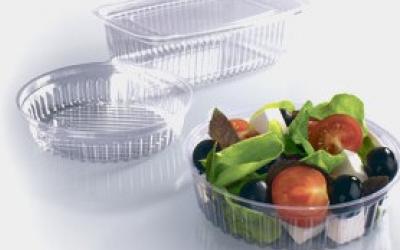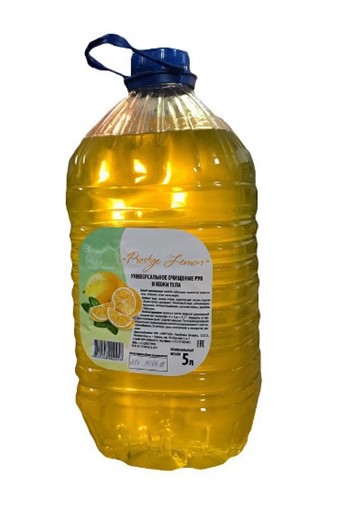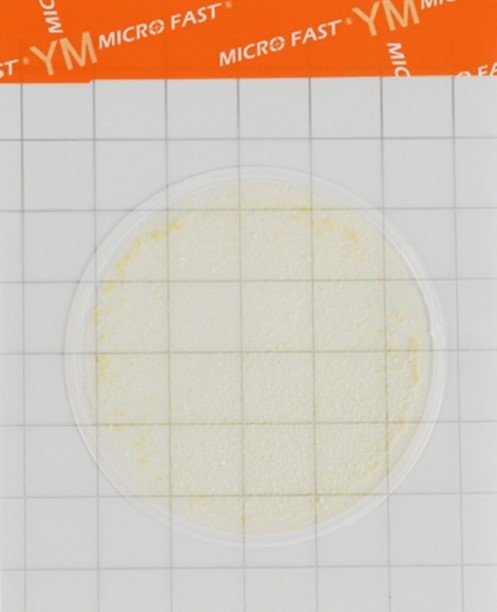In the Chebarkul fish factory, the state commission counted the caviar
In the incubation shop of the Chebarkulsky fish factory, a state commission worked, which recorded the technological operation - counting the number of eggs from which juvenile fish will be grown for compensatory stocking of reservoirs in the Urals and Siberia. As Aleksey Ekimov, HEAD of the department of fish farming and fisheries of the Ministry of Agriculture of the Chelyabinsk Region, explained, the capacity of the shops in the region makes it possible to incubate up to a billion eggs per year, and 150-200 million eggs are released into reservoirs. The caviar surplus is sold to other regions, mainly the Urals Federal District.
Fish farmers of the Chebarkul shop in the process of inventorying caviar counted 42 million peled eggs and 13.5 million whitefish caviar. Fish fry will be grown from them, which will then go straight to the mouth of the Ob River, to the Gulf of Ob, where they will be released into the water - in the course of compensatory stocking of reservoirs, the reserves of aquatic biological resources of which are negatively affected by the activities of industrial enterprises. By the way, the restoration of the fish stocks of the Siberian river is being carried out as part of the execution of the instructions of the President of RUSSIA Vladimir Putin, which he gave to the government following the results of the December meeting with young scientists.
The state commission that worked in the incubation shop of the Chebarkulsky fish factory included the senior state inspector of the department for state control, supervision, protection of aquatic biological resources and their habitat in the Chelyabinsk region Andrey Frolov, the ichthyologist of the interregional department for fishery and conservation of the VBR for the Sverdlovsk and Chelyabinsk regions of the Nizhneobsky branch Federal State Budgetary Institution "Main Basin Administration for Fisheries and Conservation of Aquatic Biological Resources" (Glavrybvod) Mikhail Pavlyuchenko, Head of the Department of Fisheries and Fisheries of the Regional Ministry of Agriculture Alexey Ekimov.
Andrey Frolov, senior state inspector of fish protection, said that an inventory of caviar at the fish factory is carried out every year.
- Whitefish species spawn in November, the incubation period occurs in May. Now the caviar is almost ripe, we are making a calculation, drawing up an act on how much caviar the producer has, - Andrey Frolov explained. - This is necessary in order to know how much whitefish larvae will be released into the rivers of Siberia in order to compensate for damage to aquatic biological resources. This fish will not remain in the Chelyabinsk region, because it is necessary to restore the population of muksun in the northern rivers and lakes, in the natural places of its spawning. Today it is on the verge of extinction, and such enterprises as the Chebarkul fish factory, which have their own brood stock, help to restore this population.
Checking the activities of a fish-breeding enterprise is divided into four stages: first, the availability of the necessary capacities for growing fish is confirmed at the farm, then the grading of the replacement and brood stock of various fish species is carried out, the third stage is an inventory of caviar, the fourth is direct control of the release of larvae or grown fish into the reservoir.
In the Chelyabinsk region, caviar for compensatory stocking is produced by four large enterprises: the Chebarkul fish factory, the Troitsk food company, the Shershnevsky fish hatchery, and the Upper Ural company Aquaculture. They have workshops, special equipment, broodstock. Of course, these enterprises also produce caviar and larvae for their own cultivation of marketable fish, for sale to fish farms that do not have their own production of caviar, including other regions of the country, mainly in the Ural Federal District.
The water bodies of the region where fish are released, the so-called receiving tanks for compensatory stocking, are the Magnitogorsk, Shershnevskoye, Troitskoye reservoirs; in 2023, Lake Smolino will be added to them, in 2024 - lakes Second (Krasnoarmeysky district), Sinara (Snezhinsky district), Atkul (Yetkulsky district), Argayash (Argayashsky district), Bolshoy Kremenkul (Sosnovsky district). The list of these reservoirs was approved by the All-Russian Research Institute of Fisheries and Oceanography.
In addition to receiving tanks, fish larvae are released into other reservoirs for growing marketable fish in fish breeding areas. There are 199 such fish in the Chelyabinsk region. In 2023, it is planned to release 150 million young fish. This is slightly less than last year, due to a decrease in the water level in the water bodies of the region. The so-called warm-water fish are released into the South Ural reservoirs: with compensatory stocking - carp, silver carp, grass carp, pike perch, pike, and with commercial stocking - other species.
For example, Chebarkul fish farmers plan to stock eight lakes this year, where the fish factory has fish breeding sites. 26 million whitefish larvae, 200,000 reared whitefish juveniles, three million carp larvae, 10 million common carp larvae and 200,000 other fish species will be released into water bodies.
By the way, when inventorying caviar, Chebarkul fish farmers use the volume-weight method. By weighing different volumes of eggs, they calculate the weight of one egg, and then calculate the amount in 8 liters - this is how much the Weiss apparatus for incubating eggs, which is a large glass flask, in which clean water of the required temperature constantly circulates, can accommodate. There are several hundred such devices in the incubation shop of the Chebarkul fish factory, and when fully loaded, 300 million whitefish eggs are placed in them.
The chief fish farmer of the Chebarkul fish factory, Natalya Dronova, says:
“2022 was a special year. Firstly, it is a hot summer, and secondly, the water level in reservoirs is falling in the Southern Urals. The conditions for the supply of feed have changed, now we are switching to other, very different feeds. For fish that sit in the cage all the time and do not eat natural food, this is very important. Every year we build up the broodstock, that is, we try to do more. Right now, there are 15 million living eggs here, at the stage of eye pigmentation, that is, almost all of them will become larvae. That year it was 10 million. We also breed sterlet fry - the Ob, Kama, Volga populations. There are carp, whitefish, which we will stock the Chebarkul lakes with. We have done very well stocking with peled, this is also a whitefish breed, very tolerant of high water temperatures. She was brought to the region at one time, have worked out the technology and are now releasing them into our lakes. In the spring we plant a larva, in the fall we get 100-120 grams of fish. A beautiful fish that goes well for drying, smoking! This is a feature for the Southern Urals, I have not seen it anywhere else, so small, beautiful.
Aleksey Yekimov, head of the department of fish farming and fisheries of the Ministry of Agriculture, says that the products of the South Ural fish factories are highly valued in other regions of the country. Vitality and quality of caviar are promoted by clean water used in keeping the broodstock and incubation and the professionalism of fish farmers. And the development of the material base of fish farms is supported by state subsidies.
- There is support from the Ministry of Agriculture - reimbursement of capital costs for the construction and modernization of agricultural facilities, in particular fish breeding complexes. If the farm builds such a complex, passes all the examinations, puts it into production, grows either seed or marketable fish, then such an enterprise can receive reimbursement of up to 49.9% of the costs, - said a representative of the Ministry of Agriculture. - The same Chebarkul fish factory built an additional industrial fish farming workshop in 2020, and state support was allocated to it. This is one of the auxiliary fish breeding workshops in our region, which is necessary to solve the tasks. Its capacity is designed for incubation and cultivation of muksun (1.5 grams) in the amount of 1 million pieces per year, or other valuable and especially valuable fish species, depending on the needs. If we talk about the Chelyabinsk region as a whole, then all our workshops together can produce at least 1 billion larvae per year. Consumption in the region, depending on the season, is from 150 to 250 million annually. Accordingly, there is a large surplus, and every year we more than provide the necessary volume, which is not enough for fish farms that have fish farms in the Tyumen, Sverdlovsk, Kurgan regions, Khanty-Mansiysk and Yamalo-Nenets Autonomous Districts. Therefore, our task is to ensure that as many fish breeding sites in the Chelyabinsk region as possible are allocated where this fish can be released. Accordingly, the more sites there are, the more caviar will be laid. - from 150 to 250 million annually. Accordingly, there is a large surplus, and every year we more than provide the necessary volume, which is not enough for fish farms that have fish farms in the Tyumen, Sverdlovsk, Kurgan regions, Khanty-Mansiysk and Yamalo-Nenets Autonomous Districts. Therefore, our task is to ensure that as many fish breeding sites in the Chelyabinsk region as possible are allocated where this fish can be released. Accordingly, the more sites there are, the more caviar will be laid. - from 150 to 250 million annually. Accordingly, there is a large surplus, and every year we more than provide the necessary volume, which is not enough for fish farms that have fish farms in the Tyumen, Sverdlovsk, Kurgan regions, Khanty-Mansiysk and Yamalo-Nenets Autonomous Districts. Therefore, our task is to ensure that as many fish breeding sites in the Chelyabinsk region as possible are allocated where this fish can be released. Accordingly, the more sites there are, the more caviar will be laid. Therefore, our task is to ensure that as many fish breeding sites in the Chelyabinsk region as possible are allocated where this fish can be released. Accordingly, the more sites there are, the more caviar will be laid. Therefore, our task is to ensure that as many fish breeding sites in the Chelyabinsk region as possible are allocated where this fish can be released. Accordingly, the more sites there are, the more caviar will be laid.
Press Center of the Ministry of Agriculture of the Chelyabinsk Region




























































